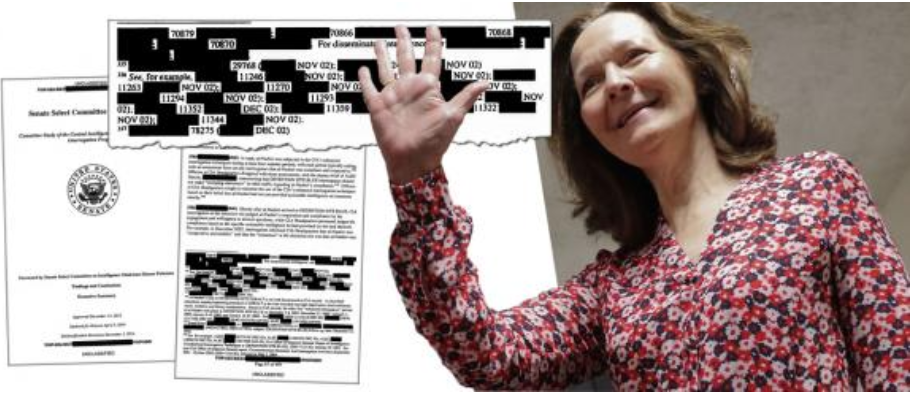
CIA director Gina Haspel supervised the torture of an alleged terrorist at a CIA black site in November 2002, according to declassified records obtained by the non-profit National Security Archive.
Haspel’s supervisory role at the secret prison in Thailand was known before she was confirmed as CIA director in May with virtually no public hearings or declassification of records that have accompanied confirmation of past directors. What was not known as that the harsh interrogation of Abd al Rahim al-Nashiri, a participant in the bombing of USS Cole in 2000. began on the very day Haspel took command of the black site, known by the code name GREEN. The memos illuminate the mindset that enabled CIA officials to engage in the harsh and unsuccessful interrogation techniques that Haspel herself has since repudiated.
What makes torture possible?
False premises:K ey to the torture order, notes Archive executive director Tom Blanton, was the “HQS [headquarters] assessment that… Nashiri… has access to perishable threat information that he will not willingly share….” Ultimately, after two months of torture, first in Thailand and then in Poland… CIA interrogators concluded this was not the case.”
Medicalization: Although the CIA redacted Haspel’s name and those of the CIA contract psychologists James Mitchell and Bruce Jessen from the documents, other declassified documents (including the 2004 CIA Inspector General report) confirm the doctors’ role in the waterboarding of al-Nashiri.
Normalization: In one document CIA redacted most of the description of the two sessions on that day, one that started at 1013 local time, but declassified how Haspel and Com incorporated torture into their daily schedules. After a still-classified interrogation session in the morning, agency personnel took a break. “Following lunch and several strategy meetings between base personnel,” the torture resumed at 1555 local time. Before and after, Nashiri was hooded and confined to the “large” box; while during the sessions, he was “backed against the walling panel.”
Glamorization: Another document uses vivid language to convey the torturers’ self-image as masters of control and power.
The interrogators “strode, catlike, into the well-lit confines of the cell at 0902 hrs [redacted], deftly removed the subject’s black hood with a swipe, paused, and in a deep, measured voice said that subject – having ‘calmed down’ after his (staged) run-in with his hulking, heavily muscled guards the previous day – should reveal what subject had done to vex his guards to the point of rage.”
Yet it was all an illusion. Nashiri had already provided actionable intelligence under lawful interrogation by FBI agent Ali Soufan. He was not the mastermind of the al-Qaeda attack on the USS Cole in 2000 as Haspel’s boss and mentor Jose Rodriguez claimed, according to Soufan. He had no actionable intelligence. Torture yielded Haspel nothing of value but the approval of her bosses, which ultimately landed her the top job at the agency.
Source: Gina Haspel CIA Torture Cables Declassified | National Security Archive



